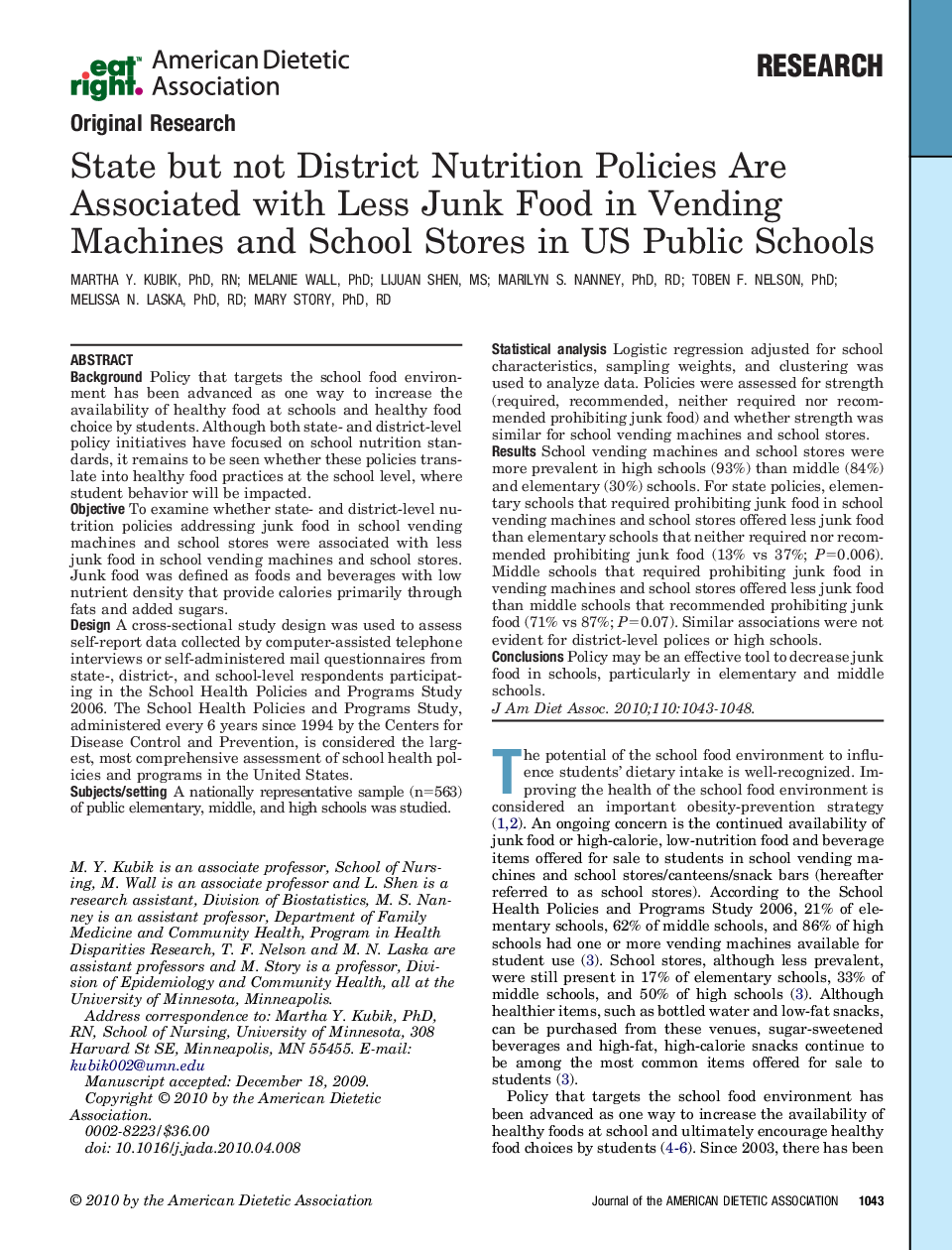| کد مقاله | کد نشریه | سال انتشار | مقاله انگلیسی | نسخه تمام متن |
|---|---|---|---|---|
| 2658001 | 1140045 | 2010 | 6 صفحه PDF | دانلود رایگان |

BackgroundPolicy that targets the school food environment has been advanced as one way to increase the availability of healthy food at schools and healthy food choice by students. Although both state- and district-level policy initiatives have focused on school nutrition standards, it remains to be seen whether these policies translate into healthy food practices at the school level, where student behavior will be impacted.ObjectiveTo examine whether state- and district-level nutrition policies addressing junk food in school vending machines and school stores were associated with less junk food in school vending machines and school stores. Junk food was defined as foods and beverages with low nutrient density that provide calories primarily through fats and added sugars.DesignA cross-sectional study design was used to assess self-report data collected by computer-assisted telephone interviews or self-administered mail questionnaires from state-, district-, and school-level respondents participating in the School Health Policies and Programs Study 2006. The School Health Policies and Programs Study, administered every 6 years since 1994 by the Centers for Disease Control and Prevention, is considered the largest, most comprehensive assessment of school health policies and programs in the United States.Subjects/settingA nationally representative sample (n=563) of public elementary, middle, and high schools was studied.Statistical analysisLogistic regression adjusted for school characteristics, sampling weights, and clustering was used to analyze data. Policies were assessed for strength (required, recommended, neither required nor recommended prohibiting junk food) and whether strength was similar for school vending machines and school stores.ResultsSchool vending machines and school stores were more prevalent in high schools (93%) than middle (84%) and elementary (30%) schools. For state policies, elementary schools that required prohibiting junk food in school vending machines and school stores offered less junk food than elementary schools that neither required nor recommended prohibiting junk food (13% vs 37%; P=0.006). Middle schools that required prohibiting junk food in vending machines and school stores offered less junk food than middle schools that recommended prohibiting junk food (71% vs 87%; P=0.07). Similar associations were not evident for district-level polices or high schools.ConclusionsPolicy may be an effective tool to decrease junk food in schools, particularly in elementary and middle schools.
Journal: Journal of the American Dietetic Association - Volume 110, Issue 7, July 2010, Pages 1043–1048